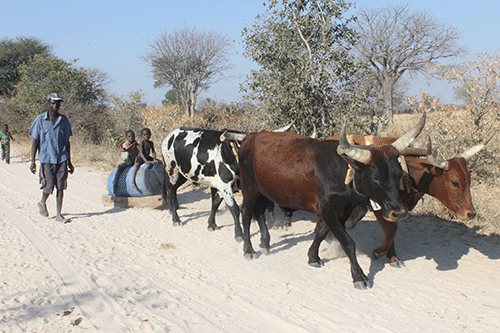NKURENKURU – Kavango West governor Sirkka Ausiku says the developmental state of her region continues to improve.
Ausiku made the remarks during her state of the region address on Friday at Nkurenkuru.
“Especially in the areas of bringing services closer to the people, ministries continue to establish offices in Nkurenkuru – and in the process, creating jobs; this has improved service delivery and to stimulate our local economy,” she said.
Ausiku called upon offices, ministries and agencies (OMAs) to decentralise their functions to the regional councils for improved operations.
“I am happy to report that the Ministry of Health and Social Services responded to our call last year by setting up their offices in Nkurenkuru. The region is positive that the remaining OMAs will follow suit,” she noted.
Although there have been positive developments in the region over the past eight years, challenges remain substantially the same and need to be addressed.
“However, the region appreciates how government is addressing these challenges, although not at a pace the region would like to see, because of what the country is going through – like the prolonged drought and current outbreak of Covid-19 pandemic,” she said.
Ausiku reiterated that Kavango West is still very rural, with high levels of poverty and unemployment, especially among the youth. In this regard, the region identified growth points that can be developed into settlements and towns, with the main purpose of bringing basic services and facilities like water, electricity, education and health facilities, housing, communication and roads infrastructures to these villages to stimulate their economic growth.
The following villages are identified as growth points: In Mankumpi constituency: Satotwa and Mururani, along with Katjinakatji village. In the Ncamagoro constituency: Ncamagoro and Erago village. In Ncuncuni constituency, the region identified Ncuncuni and Ncaute villages, while in Kapako constituency, it is Bunya village and Kapako village. In Musese constituency, it is Rupara and Naucova. Other growth points are in Tondoro constituency, specifically Mburuuru and Tondoro villages – and in Mpungu constituency, it is Mpungu Vlei, Simanya and Nepara villages.
“The region appreciates institutions that have responded to the call of bringing the much-needed services to these villages. As reported last year, the regional unemployment rate slightly dropped to 33% in 2018 – and among the youth, it stands at 46.8%, according to the 2018 Namibia Labour Force Survey,” she said.
The poverty rate of the region stood at 27% in 2018, according to stats from Namibia Statistics Agency.
Similarly, Ausiku noted that development in the region is still hampered by challenges such as poor road infrastructure network like feeder roads in the inland, inadequate water infrastructure, inadequate rural electrification infrastructure, and poor mobile communication networks in most parts of the region.
The governor also blamed the poverty in her region on poor land administration and management, inadequate health and educational facilities, coupled with a high rate of teenage pregnancies and school dropouts, among others.
“Moreover, the lack of national documents has also contributed to the poverty levels in the region, where many of our people still do not have the required national documents to access the available social grants,” she said.


